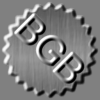Thanks for all the feedback people.
Right now, I've formulated my idea's as following after changing several things as a result of the input I got here. If you don't want to read it all, skip to the end for the
summary. :)
I think this idea should provide fast combat, with several stress-factors like selecting the right units or calling them in later on, finding the right positions for your units on the battlefield and keeping the ammunition supplylines up. Not to mention the combat going on at multiple places.
Oh, and I thought a table of content wouldn't be a bad idea for such a long post:
1. Unit selection, reinforcements and fire support2. Low-level gameplay mechanics3. Battlefield constructions4. Ammunition supplies5. Multiplayer modesSummary1. Unit selection, reinforcements and fire supportUnits are built back home - not on the battlefield...You select your units before the mission starts, with a limited amount of points to spend. A part of these points is 'locked', e.g. the units chosen for them can only enter the battlefield later on, serving as your reinforcements. During the mission, you can change the configuration of these reinforcements in case something unexpected happens. These locked points can also be spent on other things than units. Think of artillery- or air-support, or specific ways to insert your reinforcements into the region (like by helicopter or parachute). These points would be spent on setting up artillery behind your lines, or requesting some aircraft to your region.
Note that ammunition can be called in just as if it were a form of units - their transport can be changed just like with units and they are a one-time thing, unlike artillery support or aircrafts which can be called in every now and then.
In singleplayer, the rules are extended a bit: additional points can be rewarded in special cases, reinforcements can be delayed for storyline purposes or artillery can be taken down making it unavailable for the rest of the mission.
Currently, I think having a certain delay for reinforcements is enough - you can call them in all at once, or call them in group for group so you can still choose other units, should the situation require it.2. Low-level gameplay mechanicsCover, unit behaviour and unit selectionCover is highly important: infantery are killed after one or two gunshots usually. Their armour lowers the chance of a fatal hit, but won't hold too much fire. Cover significantly lowers the chance of being hit. Therefor, units will automatically run towards the nearest cover when under fire. Objects that provide cover are for example bushes, low walls, vehicles and sandbag walls.
Units will have a basic AI, that makes them search for cover when under fire, search for nearby ammunition crates when running out of ammo, riding together with their assigned APC when traveling (to make APC's easier to handle and more usefull for fast troop transport) and so.
Units are grouped together and selection goes on a per-group basis. These groups resemble the military structure and are divided before the mission starts. Each group appears as a numbered icon on the hud (groups 0 - 9). Clicking the icon shows the content of the group, their status and maybe other important information.
For larger scale battles, I'm thinking about dividing these groups into subgroups (1a, 1b?), showing the subgroups (that are the actual selectable groups) of the selected supergroup on the hud.3. Battlefield constructionsSandbags, tank traps, barbed wire...In the field, fortifications can be constructed, like sandbag walls (providing cover bonus for units), cammo nettings (providing stealth bonus for units), tank traps, barbed wires and others.
Existing buildings can be used as cover, or be given specific functions like headquarters, medical quarters or ammunition depots. These functions are quite 'free' - they don't require an exact pre-shaped building or space, you can use whatever is at hand that fits, or set up tents or others. Basically, it evolves around the equipment and their function rather than the buildings shape.
A machinegun nest, for example, would consist of a sandbag wall, a cammo net and some units carrying a machinegun. These units are free to move, but the nest provides physical and visual cover for them. An ammunition depot, as another example, is just a place where ammunition crates are stocked up, but you may want to store them inside a building for protection, or behind a large pile of sandbags.
Then again, bunkers and guard-towers can be found on the battlefield as well, but they can't be built in real-time and only serve their purpose once you put troops inside them. Buildings themselves are just dead crete and steel.
About 'building' functions, namely the headquarters, I'm thinking about giving the player access to maps of the battlefield, and icon indications on them to represent the combat groups as long as a HQ is setup, allowing mobile HQ's in offensive, traveling missions (staff car or communications truck?).4. Ammunition suppliesInfantery rifles, tank cannonsEvery unit eventually runs out of ammunition. On easier skill-settings, they can switch to a low-powered weapon, like troopers would use their pistols and melee weapons and tanks would be limited to their machineguns only, where these would fire much less as fully-stocked ones. On harder skill settings, the rule 'you can't use what you don't have' would simply apply.
Ammunition crates can be dropped anywhere. Preferrably, you want to stock them up where they're in demand: close to a machinegun nest or dot them behind your frontline. Just make sure they aren't set on fire by a loose grenade, while still keeping them easy to reach for your troops.
As for an offensive mission, ammunition can be loaded directly from the truck that transports it, preventing the - in that case - needless stocking of ammo crates on the ground. However, units need to stop moving before loading up. This ensures an attack wave has to halt at some point, stocking up on ammo, which gives the enemy some time to rethink the situation, possible launching a counter-attack. I think this balances the situation somewhat and in longer, larger-scale battles, becomes an important factor.
For now, I think keeping ammunition a simple resource rather than dividing it up into ammo types is best. This means a tank uses the same ammunition crates as infantery, but uses much more ammo points per shell. This also means enemy forces can capture ammunition stocks.5. Multiplayer modesBases, frontal attacks and breakthroughsBase assaultThe base idea Talroth suggested sounds good. The way I would implement it, is by giving a limited amount of points for the buildings and a limited time to place them at the start of the match. This would be an instant placement method, so it is as if these buildings were built in the region a while ago. Then the same rules would apply: select your army limited by your army points, and eventually select reinforcements limited by your reinforcement points. Reinforcements arrive in your base by default. The battle is ended once an enemy base is occupied or destroyed, so players have to strike a balance between defense and offense.
Frontal attackBasic rules: select your army, select your reinforcements. Armies start at the edge of the map and have to fight each other to death. Keeping a route to the edge open might be usefull should you need ammunition, or reinforcement points might be spent to drop them directly - costing you points.
BreakthroughArmies fight frontline to frontline, close to each other. Force a breakthrough and get behind the enemy lines for a certain time to win. Reinforcements should be used wisely to seal up weak points in your line or to stop units that already have broken through. Similar to the base assault mode, but the battle is more stretched, the occupyable area is much larger and there's a little time buffer before an occupying group means victory, or defeat.
SummarySo, in short, the idea focuses on combat that evolves around a limited amount of units that endure longer. Cover is a strategically important factor that keeps your units alive much longer, ammunition forms a stressing factor that forces players to make their moves fast. Cover and ammunition keep a balance here, I believe.
Buildings exist on the battlefield and serve as cover or a shell for certain functions like ammo depot, headquarters or medical quarters. In real-time, quick barricades can be constructed to provide cover. Usefull for defending area's, too time-consuming on a moving front.
Multiplayer modes focus on efficient unit selection and use. Resources are limited which should prevent battles from becoming long (and possibly boring).






